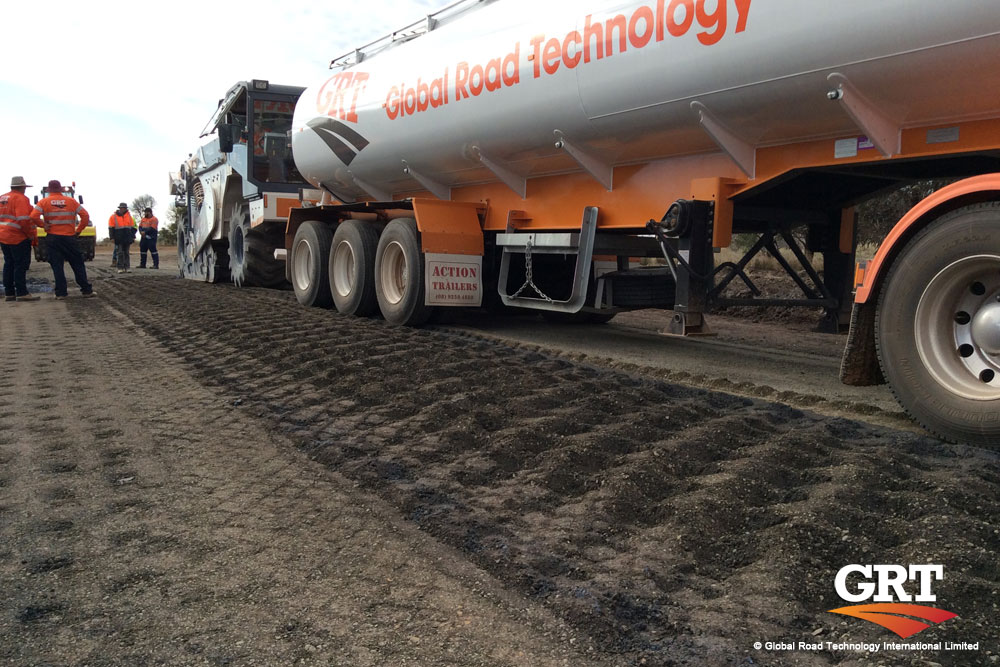
Soil Stabilisation Series – Article 3
Based on the previous article, we have already witnessed how easily soil stabilisers can be misused or misrepresented. It all begins with the salesman convincing the customer to buy soil stabilisers they don’t really need. More than often, these salesmen don’t have the technical understanding or background to fully understand what product is best for which situation. GRT’s team provide support in addressing the needs of the consumer. As well as to match your needs with the product that is right for the purpose it’s needed for. This article will be discussing why GRT’s products are practical, but more importantly, why GRT’s soil stabilisation products actually WORK!
Global Road Technology has produced its own range of specifically designed products that are much less controversial than those mentioned in the article “False Stabilisers”. But WHY?
GRT has its products tested, meaning, multiple experiments are conducted to prove the practicality. GRT’s products look at directly improving specific properties for their designated use and address weakness within the material. For example, the weakest part of a cement structure is usually found on the bottom face of a base course layer as seen in the figure below. GRT’s soil stabilisation products use a specific makeup of chemical polymers to strengthen this weakened area by increasing the tensile strength of soil in the aim of minimising: fatigue cracking, induced cracking, shrinkage cracking and maximising resilience to compression.
In addition, the chemical properties allow for prolonged waterproofing, more importantly, it provides an effective method of distributing weight when the cement structure is overloaded with pressure. This additional support has led to the reduction of pavement thickness required. The resultant decrease in the thickness of material offers a huge savings of between 4x-10x cheaper than normal.
In one of the studies undertaken, the figure above was compiled. It shows the flexibility of cement mixed with GRT’s product, which shows an increase in flexibility in the cement structure higher than the “normal” cement (which is mixed with other stabilisers). This allows the cement with the GRT products to react more effectively by alleviating stress on the normal rigid structure of the cement when exposed with consistent weight compression. Normally, the cement divides the stress within the rigid bonds of the cement within a small area. Due to this rigidity, the bonds are not able to flex, this increases the strain placed of these bonds, especially when there is a heavy load applied to a small area. This significantly increases the rate at which the road is weathered and ruptured. With the GRT product mixed in with the cement, the mixture is able to adapt to the pressure, especially over long periods of time. As the pressure builds, it allows the bonds within the cement to flex increasing the surface area at which the pressure is applied. This not only reduces the stress on the individual bonds but allows the entire cement structure to adapt to the conditions that it is exposed to. This process results in a longer-lasting cement pavement structure, and more effective solution compared to normal cement. This practical solution heavily reduces the symptoms of road pavement deterioration such as dust, potholes, rutting and corrugation, and furthermore extends the life of the road pavement. Potholes, rutting and corrugations are all symptoms of a road unable to deal with the stress of consistent heat and pressure for a prolonged period. By reducing the impact of these critical factors significantly increases the life span and quality of the cement structure. Without GRT’s technology, the compromising of road pavement can disrupt traffic, schedules, projects and people’s lives. In worst-case scenarios, it can result in vehicle accidents, cut off communities, all of which affect the flow of goods on people.
The delicate balance of chemical polymers achieved by GRT has seen a soil stabiliser that works, and laterally checks all the boxes. For example, all of GRT’s soil stabilisation products are non-toxic, environmentally safe and extremely robust. Meaning even after years of use, when the road is replaced or upgraded the chemicals in the structure pose no risk, and completely eliminates the consumer from liable risk.
GRT aims not only to provide a product that works practically, but is also long-lasting, and on top of it all is cost-effective. As has been said many times before, quality is key, especially when it comes to the resource industry. GRT’s polymer soil stabilisation technologies can alleviate very real social, environmental and economic concerns. The next step is to review the products GRT offer, hence why the following article will be discussing and reviewing some of GRT’s popular soil stabilisation products. Each product will be summarised and evaluated based on its practicality, applications and key benefits. Each product has a variation in chemical structure to achieve its primary uses specific to the industry, which will be explained.
Your feedback is important to us. If you enjoyed reading this Global Road Technology industry update and found it informative, please let us know by leaving a REVIEW.
Are environmental regulations, health and safety concerns or potential profit loss a concern right now?
Contact Us Now